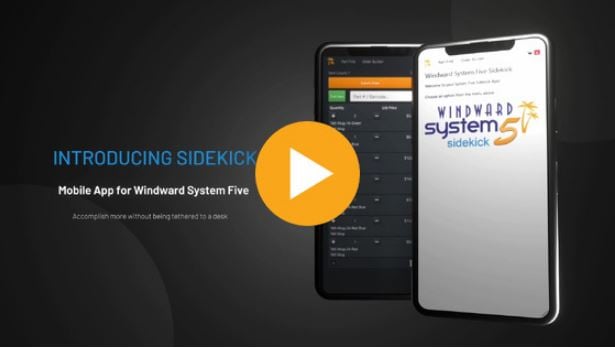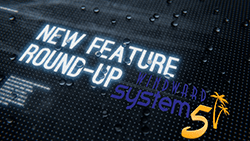System Five Payment Processing with version 6.4.x.x
With the retirement of the PCI DSS PA program, version 6.4 will no longer support the storage of card holder information. Recurring Payments must now be completed using a supported Tokenized payment processor or the Datacap Hosted service which supports tokenization across most processors.
WorldPay Canada (Mercury) accounts are transitioning to Global Payments Canada. Global Payments previously handled the EMV payment processing on behalf of Mercury, though reoccurring and card not present transactions were processed by Worldpay (Mercury).
Global Payments Canada Setup with Card Not Present
The merchant will need 2 accounts, for each department.
- Regular EMV card present tokenized account.
- E-Commerce / card not present tokenized account. (Optional for on screen entry)
- WebAPIToken
- The two accounts must have a shared set of tokens
To create the Netpay Deployment Id
- Hosted Bridge
- Global Canada NETePay-Hosted Bridge – GCR
- Setup the shared token type name for each account


- Setup the shared token type name for each account




Or None if no pinpad
Known Error Messages
 Connection Reset by Peer or Error creating SSL context
Connection Reset by Peer or Error creating SSL context
- Outdated dll’s in bin folder libeay32.dll and ssleay32.dll that do not support TLS1.2
- DLL files date must be 2021 or greater in age to support TLS 1.2
- Invalid Merchant Id
Invalid AuthCode when performing a pre-auth capture
- The card not present account and card present account are 2 different accounts even though they share tokens. A pre-auth capture must be performed on the same account as the pre-auth.
Taking an on-screen payment.
On-screen payments are processed as Card-No-Present transactions, and as such are charged e-commerce or MOTO rates and not EMV rates. The merchant is also responsible for any fraudulent charges.

Datacap Netepay Hosted (US)
EVO payments now uses netepay Hosted and can be rented from EVO
Datacap Netepay Hosted can be rented from Windward Software.
Netepay supports the following processors
- EVO SNAP NETePay-Hosted Bridge - EVO
- Global Canada NETePay-Hosted Bridge - GCR
- Global Payments Portico NETePay-Hosted Bridge - HPS
- Heartland Portico NETePay-Hosted Bridge - HPS
- Paymentech NETePay-Hosted Bridge - PNH
- Paynetworx NETePay-Hosted Bridge - PNX
- RapidConnect NETePay-Hosted Bridge - RAPID
- TSYS NETePay-Hosted Bridge - TSYS
- Worldpay Core NETePay-Hosted Bridge
- Worldpay IP NETePay-Hosted Bridge
- Worldpay TCMP NETePay-Hosted Bridge – WPH
Tokens are universal across each processor, however if you are using Debit you may need to re-encrypt your pinpads with new debit encryption keys.


Note, you will need to select a pinpad for the test servers function to work correctly.

Note that the Merchant Id is your Netepay assigned Merchant Id, not your processors’ merchant Id.

If you are a Windward Cloud Client, or using Terminal Services, and you have an attached PIN Pad you need to setup the Windward Remote POS Device Manager
Optional Gift Card Setup

Upgrading from 6.2 to 6.4
If you were running 6.2, on prem and were collecting card numbers on file, (or perhaps did in the past) you will receive the following message when you first run version 6.4

If you have cards on file that you wish to keep, Please select the first option, and select Ok which will quit System Five. You will then need to run the previous version of System Five, enable the tokenization option for your processor and then run the toolbox routine to create tokens as described below.
If you receive this message and are not collecting cards on file, or not currently collecting cards on file please select the second option and confirm by typing “purge all cards” (case does not matter) and select Ok. This will then truncate all card holder data stored on file.
Cancel will quit system Five.
If you are not an administrator, the Purge option is not available and the only option is the first one, or press cancel which will quit System Five.
Creating Tokens from Card on File.
Tokens can be created from cards stored on file for a customer using the toolbox routine, or manually for each customer. Tokenization must be setup and enabled first for your card processor. If the Create Tokens button is visible, but disabled, then you do not have credit card tokenization turned on.

The tokenization will only be created for cards attached for a customer. Cards attached to an invoice that did not have a customer will not be converted.
This process will take the most recent cards on file for a customer and create a token from them. The function uses a ZeroAuth to create the token.
Using the 6.2.x.x In the scope program, select toolbox, Miscellaneous, and Create Payment Tokens. You must have tokens enabled. (If the Create Tokens button is disabled, you don’t have tokens enabled).
You can also access the create tokens routine from a customer, Credit Cards on File to create tokens for just one customer.
For testing purposes, you will need tokenization turned off and use the collect card function to collect a card number.
The List Cards function will list each card (last 4 digits) for each customer. If the card is used multiple times, only the non-expired cards will show and each card will only show once based on the last 4 digits. If a token is already created for that card, the other collected cards will not be shown.
You can either click on Create Tokens button which will create tokens for all cards listed, or you can create them individually by clicking on the button in the Token Column.
A/R customers – will show all cards for A/R customers.
Cash Customers – will show all cards for Cash customers.
Show current tokens – if checked will show all cards on file including those with tokens already. If this is unchecked and you do not see a card listed for a customer it may mean that a token has already been created for that card number.

PCI Check - Staying at 6.2.x.x




